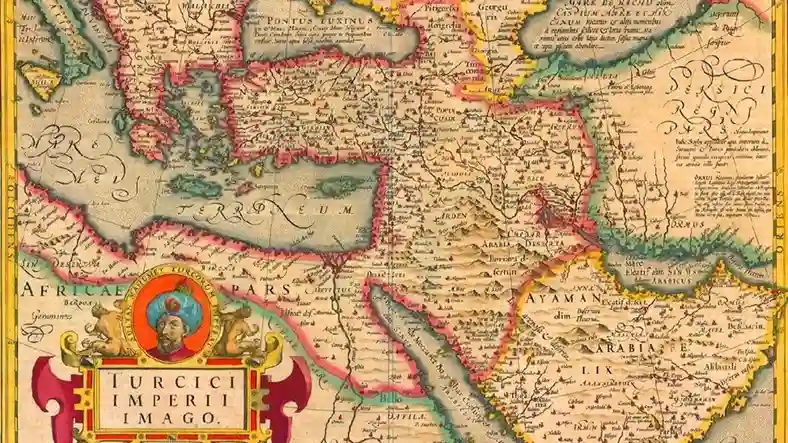The First Balkan State to Separate from the Ottoman Empire: The Ottoman Empire emerged as a major power on the world stage from the beginning of the 14th century and ruled over vast lands spanning three continents. This empire managed to hold many nations and cultures together for nearly six centuries. However, towards the end of the 19th century, the power of the Ottoman Empire began to wane and various nations within the empire began to engage in independence movements. During this period, the
first Balkan state to separate from the Ottoman Empire was Serbia. The process of independence for Serbia, the first Balkan state to separate from the Ottoman Empire, was shaped by both regional and international dynamics. Being the first Balkan state to separate from the Ottoman Empire caused Serbia to occupy an important place in history. This article will discuss the independence struggle of Serbia, the first Balkan state to separate from the Ottoman Empire, and the details of this process.
The Ottoman Empire and the Balkans
The Balkans Under Ottoman Domination
The Ottoman Empire began its forays into the Balkans in the 14th century during the reign of Orhan Gazi. This region was of great importance to the Ottomans due to its strategic location and rich resources. The Ottoman conquests in the Balkans gained momentum during the reign of Murad I with the Battle of Kosovo (1389), and full control over the region was achieved after Mehmet II (Fatih Sultan Mehmet) conquered Istanbul in 1453.
Under Ottoman rule, the Balkans became an important administrative and economic center. The Ottoman administration managed to keep the different ethnic and religious groups in the region together through the millet system. This system allowed the different groups to have autonomy in their internal affairs, while maintaining a general allegiance to the Ottoman Empire.
The Rise of Balkan Nationalism
From the end of the 18th century onwards, the enlightenment movements in Europe and the effects of the French Revolution began to be reflected in the Balkans. Nationalist movements fuelled the desire for independence among various ethnic groups subject to the Ottoman Empire. Among the Slavic peoples in the Balkans, especially the Serbs and Greeks played a leading role in the independence movements.
The First Balkan State to Separate from the Ottoman Empire: Serbia
Serbia’s Independence Process
Serbia, the first Balkan state to break away from the Ottoman Empire, began its struggle for independence in the early 19th century. A key event in this process was the uprising known as the Serbian Uprising, which began in 1804. The leader of the uprising, Karađorđe Petrović, became a prominent figure who symbolized the Serbian people’s resistance against the Ottoman yoke.
First Serbian Uprising (1804-1813)
The First Serbian Uprising of 1804 began as a large-scale popular movement against Ottoman rule. Initially, the rebellion took shape as resistance against local Ottoman rulers (dizdars), but soon grew into a broad independence movement. Led by Karađorđe Petrović, the Serbs won several key victories and took control of large parts of Serbia. However, in 1813, Ottoman forces suppressed the rebellion and Karađorđe Petrović was forced to flee to Austria.
Second Serbian Uprising (1815-1817)
Shortly after the suppression of the First Serbian Uprising, the Second Serbian Uprising began in 1815 under the leadership of Miloš Obrenović. This uprising was a more organized and effective resistance against Ottoman rule. Miloš Obrenović managed to negotiate an agreement with the Ottoman authorities that granted Serbia extensive autonomy in its internal affairs. In 1817, Serbia became a de facto autonomous region, but formally remained part of the Ottoman Empire.
The Edict of 1830 and the Official Autonomy of Serbia
Serbia’s autonomy was officially recognized by the Ottoman Empire in 1830. During the reign of Mahmud II, Serbia was granted autonomy by a decree, and Miloš Obrenović was recognized as the prince of Serbia. This decree was the first step in the official recognition of Serbia’s independence as the first Balkan state to separate from the Ottoman Empire. Serbia gained the right to establish an independent administration in its internal affairs and formed its own government.
Full Independence and the Kingdom of Serbia
Serbia’s full independence was recognized internationally at the Berlin Congress in 1878. The Berlin Congress was an important meeting that reorganized the Ottoman Empire’s lands in the Balkans and approved the independence of states such as Serbia, Montenegro and Romania. Serbia was accepted as a fully independent state by this congress and the Kingdom of Serbia was declared in 1882. Thus, Serbia, the first Balkan state to separate from the Ottoman Empire, was recognized internationally.

Key Figures in Serbia’s Struggle for Independence
Karađorđe Petrović
Karađorđe Petrović is one of the iconic figures of the Serbian independence movement. As the leader of the First Serbian Uprising, he was a pioneer of resistance against Ottoman rule. His tough and determined leadership played an important role in uniting the Serbian people against the Ottoman Empire. Although he was forced to seek refuge in Austria after the revolt was suppressed, he made a great contribution to the rise of Serbian national consciousness.
Milos Obrenovic
Miloš Obrenović is known as the leader of the Second Serbian Uprising and the first prince of Serbia. Under his leadership, the Serbs demonstrated more organized resistance against Ottoman rule and achieved autonomy for Serbia. Obrenović successfully negotiated with Ottoman authorities and signed an agreement granting Serbia extensive autonomy. In 1830, Serbia’s autonomy was officially recognized and Obrenović became the prince of Serbia.
Effects of Serbia’s Independence Process
Balkan Nationalist Movements
The independence struggle of Serbia, the first Balkan state to break away from the Ottoman Empire, was a source of inspiration for other Balkan nations. Countries such as Greece, Bulgaria and Montenegro were influenced by Serbia’s independence process and started their own independence movements. This led to the weakening of the Ottoman Empire’s dominance in the Balkans and the strengthening of nationalist movements in the region.
International Balance and Diplomacy
Serbia’s independence process also played an important role in international diplomacy. With the weakening of the Ottoman Empire, the great powers of Europe began to compete for influence in the Balkans. This led to a change in the political balance in the region and the signing of various international agreements. Meetings such as the Berlin Congress played a key role in this process and contributed to the redrawing of the political map of the Balkans.
Internal Dynamics of the Ottoman Empire
Serbia’s independence process also affected the internal dynamics of the Ottoman Empire. The empire felt the need to implement various reforms in the face of increasing nationalist movements and demands for independence. Reform movements such as the Tanzimat and Islahat Edicts emerged as part of the Ottoman Empire’s modernization efforts. However, these reforms could not prevent the collapse of the empire.
The First Balkan State to Separate from the Ottoman Empire: The Importance of Serbia
The process of independence of Serbia, the first Balkan state to separate from the Ottoman Empire, is of great importance not only for Serbian history but also for the general history of the Ottoman Empire and the Balkans. This process symbolizes the beginning of a period in which the Ottoman Empire began to disintegrate and new nation-states emerged. Serbia’s independence paved the way for the spread of nationalist movements in the Balkans and the end of the Ottoman Empire’s dominance in the Balkans.
Serbia, the first Balkan state to separate from the Ottoman Empire, represents one of the important turning points in the history of the Ottoman Empire with its struggle for independence. Serbia’s process of independence is a complex process shaped by both regional and international dynamics. The First and Second Serbian Uprisings are the most important stages of this struggle. The autonomy gained in 1830 and the full independence achieved with the Berlin Congress in 1878 are important milestones in Serbia’s process of becoming the first Balkan state to separate from the Ottoman Empire.
The independence process of Serbia, the first Balkan state to separate from the Ottoman Empire, inspired other Balkan nations, causing the spread of nationalist movements in the region and the weakening of the Ottoman Empire. This process also led to significant changes in international diplomacy and the internal dynamics of the Ottoman Empire. As a result, the struggle for independence of Serbia, the first Balkan state to separate from the Ottoman Empire, is of great importance both in terms of Serbian history and the general history of the Ottoman Empire and the Balkans.
